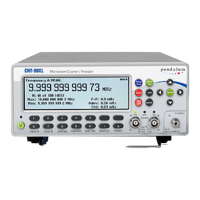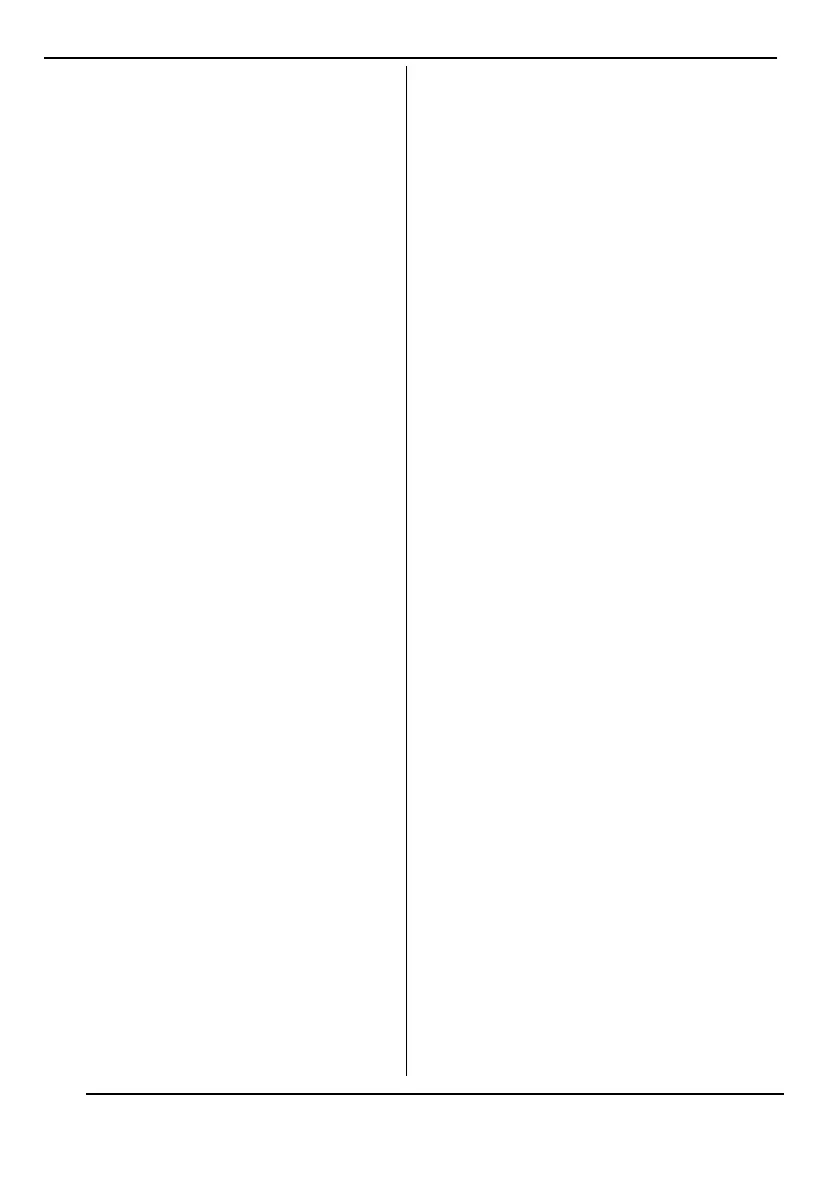Pulsed RF parameters input C
(Option 28 only)
Frequency range: 0.3 to 27/40/46/60 GHz
Timestamping A, B
This function is only accessible via GPIB or
USB.
No absolute time exists, timestamp values can
only be used for relative time measurements.
Timestamps are taken of two consecutive
positive edges and two consecutive negative
edges (pos, neg, pos, neg or neg, pos, neg, pos)
and the number of positive edges is counted.
Max.
Frequency:
Min. Pulse
Width:
Timestamp
Resolution:
Max. Frequency
to
catch each
edge:
160 MHz
2.5 ns
70 ps rms
250 kHz
Auto Set / Manual Set A, B
All measuring functions can be auto-set using
best settings for the individual functions. This
means e.g. an auto hysteresis of 40% of Vp-p
in frequency measurements, an auto trigger at
50 % of Vp
-
p with minimum hysteresis incl.
hysteresis
compensation in time measurements, an auto find of burst length
and auto sync for frequency burst measurements, etc.
NOTE: The frequency range for inputs A & B, is up to 300 MHz
for Auto trig, and up to 400 MHz for Manual trig
Input and Output
Specifications
Inputs A and B
Alternative data within parentheses refer to
input attenuator setting x10.
Frequency
Range
DC-coupled:
DC - 400 MHz
AC-coupled:
10 Hz-400 MHz
Coupling:
AC or DC
Rise
Time:
Approx. 700 ps
Impedance:
1 M /25 pF or 50
(VSWR
< 2)
Trigger
Slope:
Positiveor negative
Channels:
Separate
A & B
Max.
Channel
Timing Difference:
500 ps
Hysteresis
Window:
Residual
Hysteresis
after
Compensation:
Sensitivity
DC - 200
MHz:
200 - 300
MHz:
300 - 400
MHz:
Auto
Trig:
Attenuation:
Dynamic
Range
(x1):
Trigger Level
Resolution:
Uncertainty:
Auto trig:
Auto
Hysteresis
Time Meas.
:
Freq. Meas.
&
Per.
Avg.:
Freq.
Range:
Analog
Noise
Reduction
Filter:
Digital LP
Filter:
Trigger Indicators:
Max. Voltage
w/o
Damage
1 M
50
Approx. 30 (300)
mV
p-p
5 (50) mV (DC - 10 kHz)
15
mV
rms
25
mV
rms
35
mV
rms
35
mV
rms
x1, x10
30 mVp-p to 10 Vp-p
within ±5 V window
Read-out
on display
3 (30) mV
±15 (150) m V ± 1% of
trigger level
Automatically
set to 50% of
input signal (10% and 90% for
rise/fall time).
Relative level (in %) manually
adjustable
when necessary.
Minimum
hysteresis
window
(+compensation)
70 % and 30 % of input signal
Minimum
hysteresis
window if
arming on A or B is activated.
up to 300 MHz
Nom. 100 kHz, RC type
1 Hz - 50 MHz using trigger
hold-off
LED
350 V (DC+ AC
pk
) @ D C to
440 Hz, falling to 12 V
RMS
(x1)
and 120 V
RMS
(x10) @ 1 MHz
12 V
RMS
Specifications
USER MANUAL ● CNT 9x Series ● Rev.22 February 2020
8-19
Pulse ON voltage range:
0.4 to 40 GHz: -15 dBm to +13 dBm
(-20 dBm typ. to +13 dBm)
40 to 46 GHz: -10 dBm (typ.) to +13 dBm
46 to 60 GHz: 0 dBm (typ.) to +10 dBm
Min ON/OFF ratio: 15 dB
Pulse Width
Range: 30 ns to 1 sec.
Resolution: 200 ps rms
Accuracy: <10 ns+TBE*P_width
PRI (pulse repetition interval)
Range: 60 ns to 1 sec.
Resolution:
200 ps rms
Accuracy: <2 ns +TBE*PRI*
PRF (pulse repetition frequency)
Range: 1 Hz to 16.7 MHz (20 MHz typ.)
Resolution: (200ps/Meas_time)*PRF Hz
Frequency in Burst
Range: 400 MHz to 60 GHz
Pulse width: down to 100 ns
Resolution: (50ps/√N/Gate_time)*FREQ Hz*
Acquisition: Manual
Peak Power in Burst
Range: - 20dBm to +10 dBm
Pulse width: down to 50 us
Acquisition: Manual
Resolution: 0.1 dBm < 1ms pulse
0.01 dBm>1ms pulse
* N = number of RF pulses during total measurement
* TBE=number of RF pulses during total measurement (e.g. 6E-8)
* Gate=meas. time inside each RF
pulse

